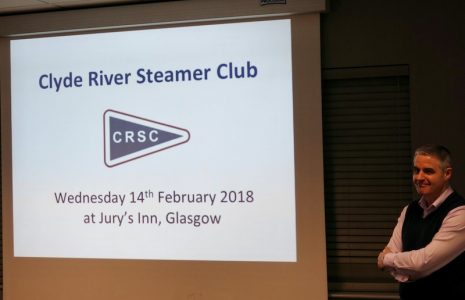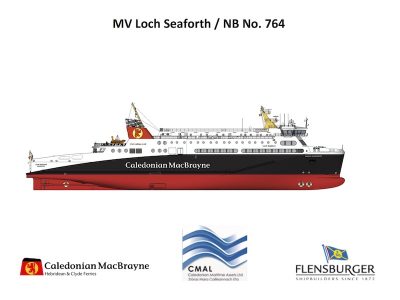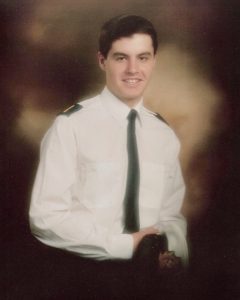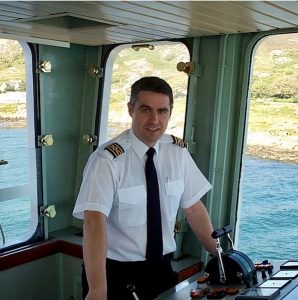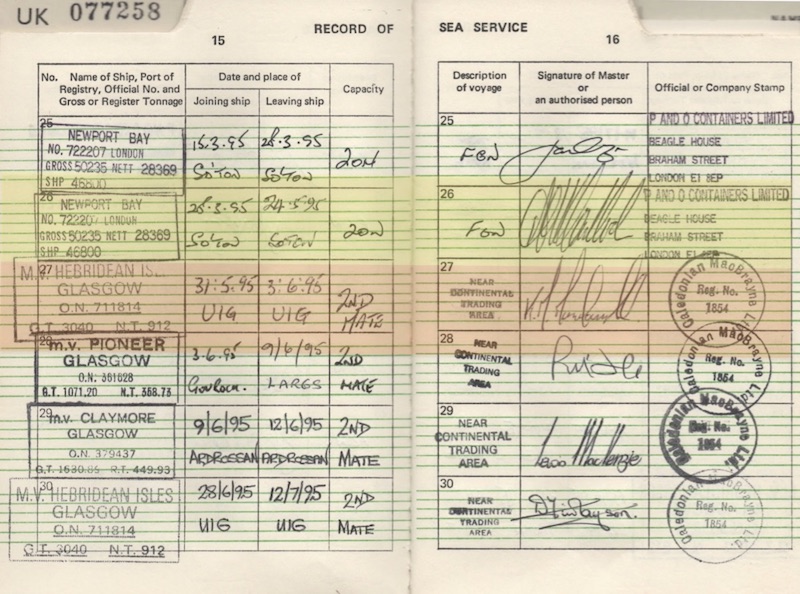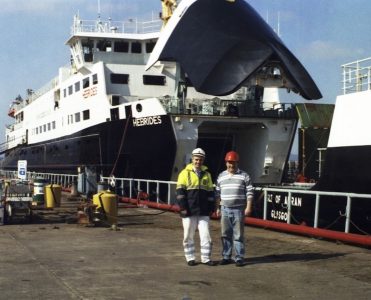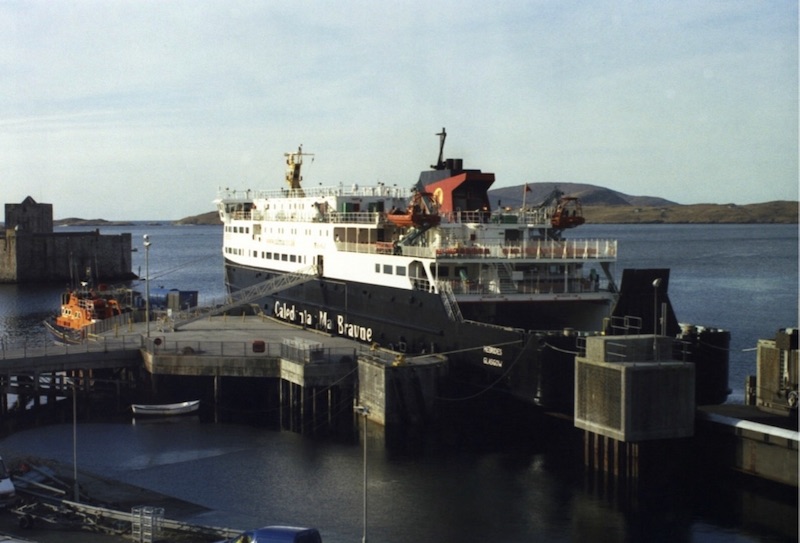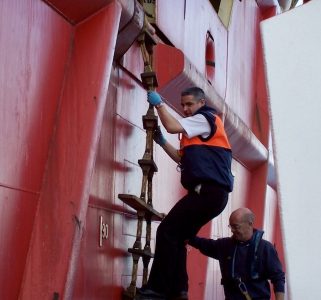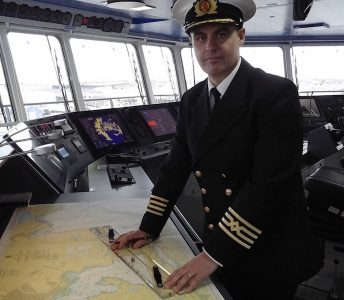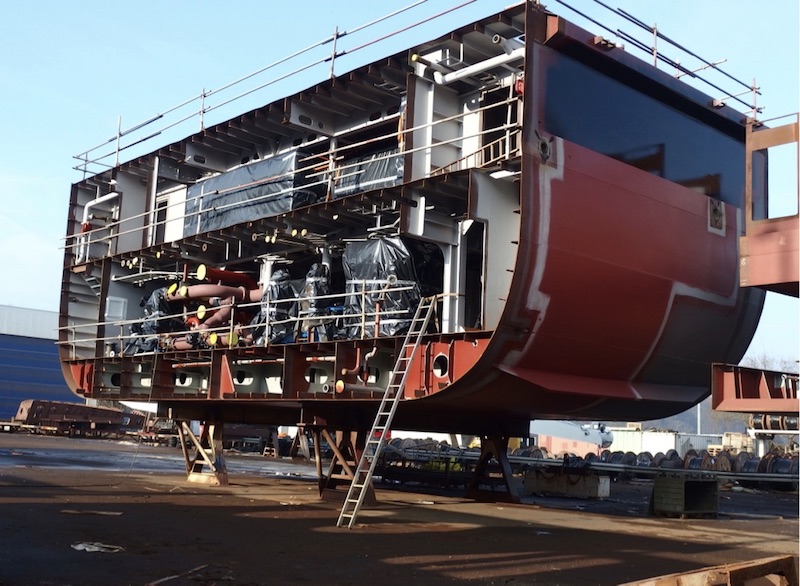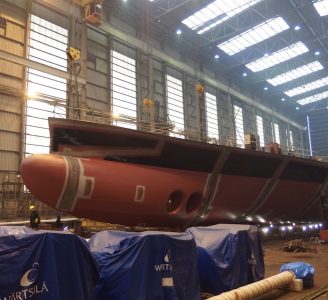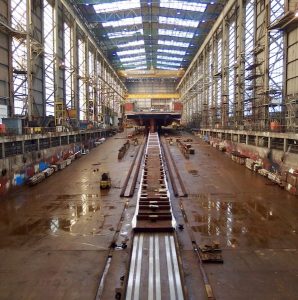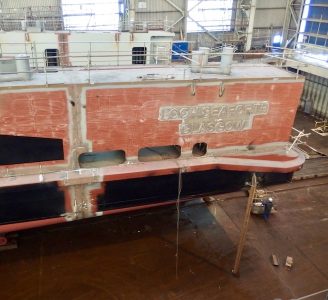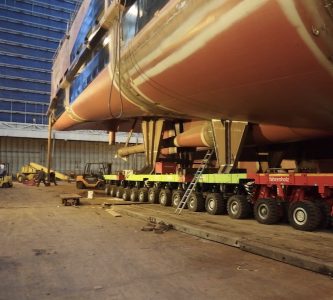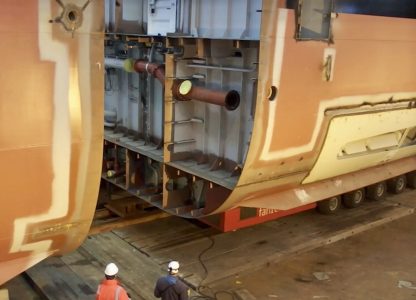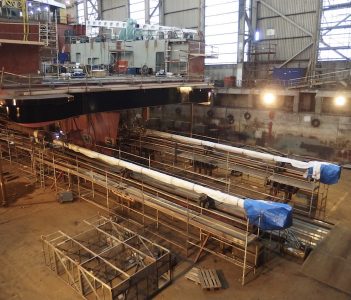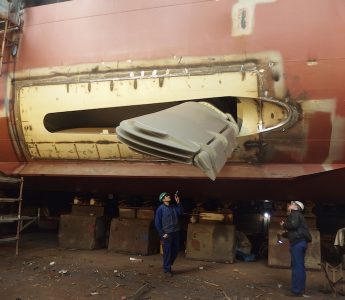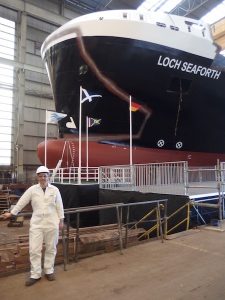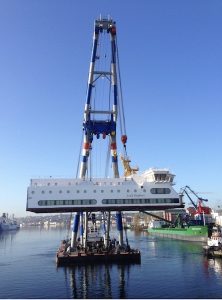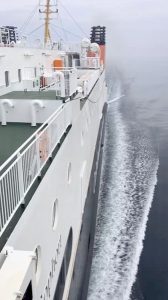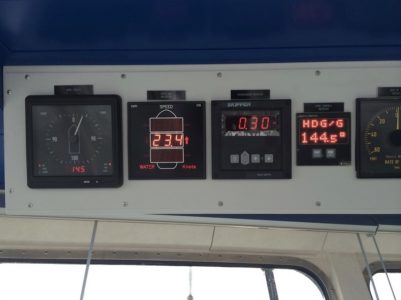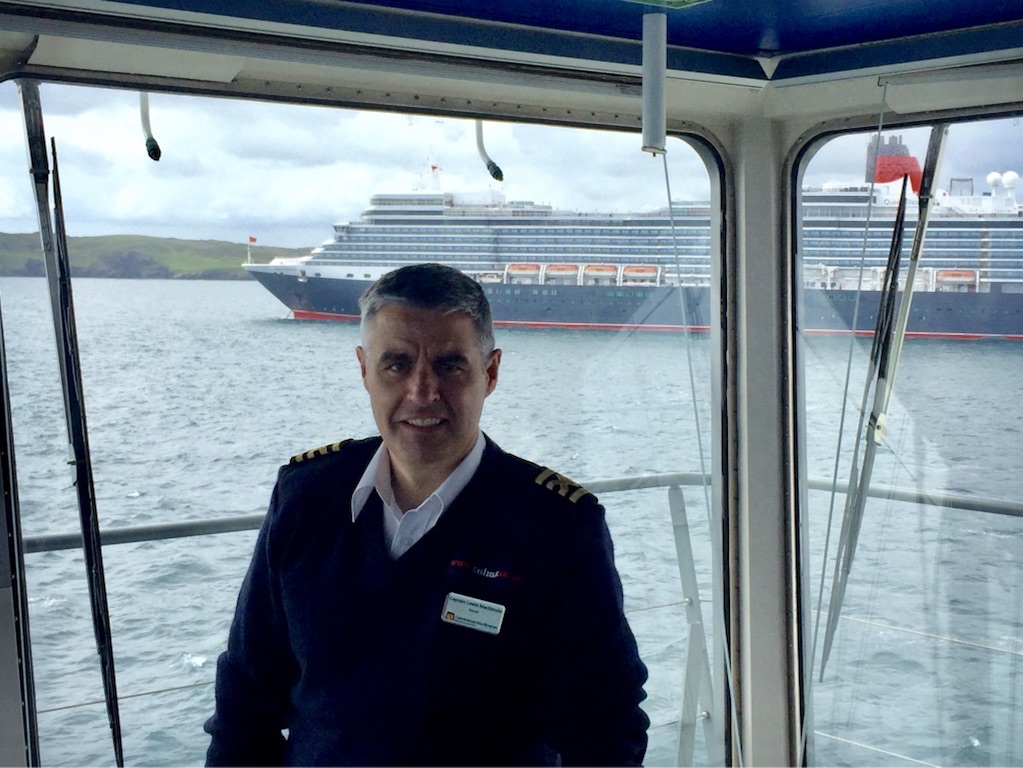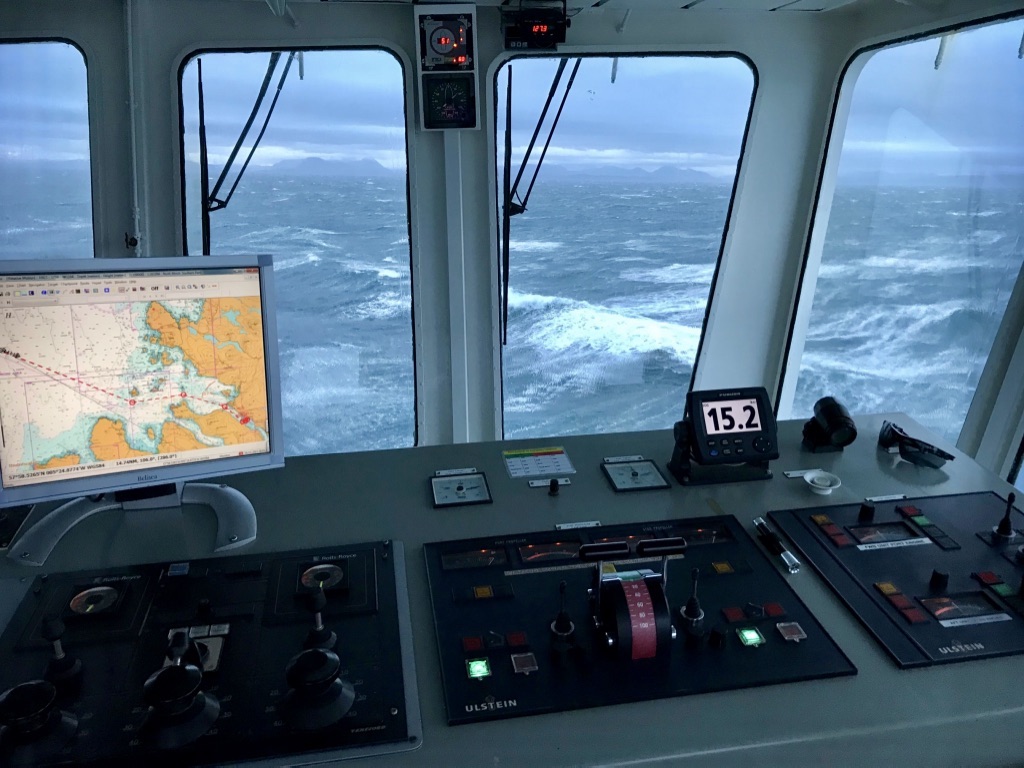
View from the bridge of Isle of Lewis on her 6 November 2017 voyage across the Minch to Ullapool. Copyright Lewis Mackenzie
On a chilly St Valentine’s night some 75 CRSC members and friends forsook their loved ones to come to Jurys Inn, Glasgow, to listen to CalMac master Lewis Mackenzie give a much anticipated presentation. Love was in the air, however, for it quickly became clear that Captain Mackenzie is very fond of his job – and who wouldn’t be? This report on the CRSC February meeting is by Stuart Craig.
Lewis Mackenzie was brought up on both Islay and Lewis, and his first crewing job on a CalMac ship was on Isle of Arran as a galley boy in the summer of 1987. This was the start of a steady journey along the route that was to bring him to his present position, as one of the company’s senior masters.
Lewis demonstrated that his ship handling skills are equalled by his photographic talents as he first of all explained his career path, and then took us through an incredibly detailed and well-illustrated account of the Loch Seaforth build at Flensburg and Gdansk.
Captain Mackenzie began his career at sea with P&O, starting off with the container ship Tolaga Bay and ending with Newport Bay. In 1995 he joined CalMac – his first ship as a junior officer being Hebridean Isles. From then on the list of ships he served upon reads like a CalMac ‘Who’s Who’. He singled out the transition from a Force 8 aboard a container ship to similar conditions aboard Lochmor. “My cabin was below water level – it was like being on a submarine.”
By 2006 Lewis was a permanent master for CalMac, and apart from a brief period away from the company, he now acts as relief master between a handful of the company’s major units (his favourites seem to be Hebrides and Clansman, but don’t tell anyone).
Turning to ‘The Seaforth Project’, Lewis then entertained and fascinated us with a chronological kaleidoscope of the ship’s construction. No steel bolt nor weld was omitted as we watched Loch Seaforth materialise incrementally on the screen in front of us. Lewis wasn’t just part of the project, he lived and breathed it for months, and his recall of the detail of the construction and technical data was amazing. And all without notes! Lewis should take part in BBC’s Mastermind – and we all know what his specialist subject would be.
Here are a few facts gleaned: Loch Seaforth’s thrusters can hold against 37kts of wind abeam. She could call at Uig, depending on tidal conditions, but not Lochmaddy or Tarbert. She can comfortably carry 130 cars, and has 41 of a crew, divided into two shifts. Her block coefficient is 0.57, Lord the Isles’ is 0.67 and a brick is 1.00.
She has two engines named Callanish and Clisham, and her anchors have been similarly christened — starboard is Gitte and the port one Jennifer. Her searchlights can illuminate an object six miles away. She was launched by a bottle of Speyside malt in March 2014 and achieved 23.4 kts on trials. Had enough?
Lewis had the honour of bringing Loch Seaforth to the Clyde on her delivery voyage, an event he was clearly and justifiably proud of.
Moving on to the weather, we were next given a display of weather forecasting techniques that Michael Fish would have been proud of.
The operating waters of Loch Seaforth are subjected to some of the windiest weather around but the ship has “unsurpassed sea-keeping qualities” although “….we try to avoid taking her out in anything over five metre seas.” We were then shown some video of such seas captured from the bridge of Isle of Lewis and Loch Seaforth.
Captain Mackenzie finished off his talk with pictures he had taken of various members of the fleet in various locations. He is a man who clearly loves his vocation and the ships under his command are most definitely in safe hands. Lewis’s presentation was entitled “A View From the Bridge”. From where I was sitting it was a very enlightening panorama indeed.
The enthusiastic vote of thanks was delivered by an equally enlightened Robin Copland.
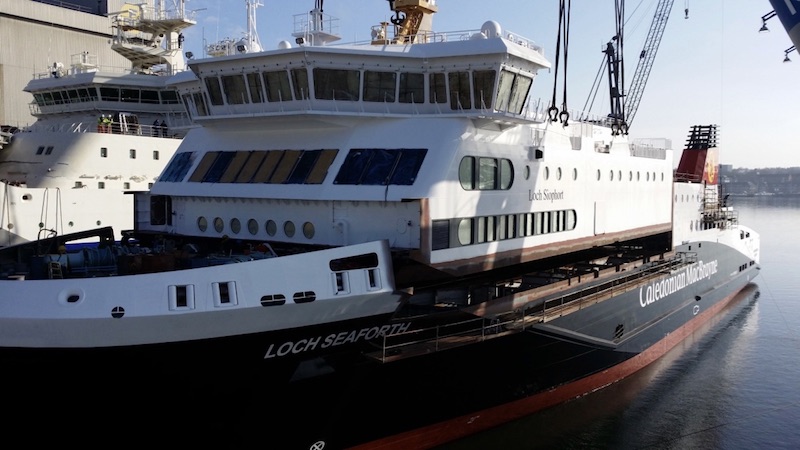
Fitting of the accommodation block, which had been made in Gdansk and transported to Flensburg by barge
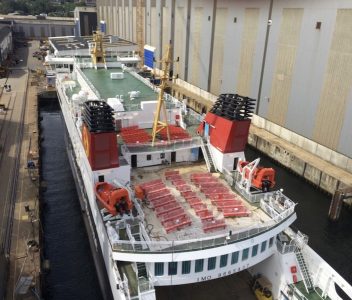
View of Loch Seaforth from a crane at the Flensburg shipyard. Before handover to CMAL and her CalMac Ferries crew, she was dry-docked at Odense in Denmark and put through rigorous trials to and from the island of Bornholm in the Baltic Sea
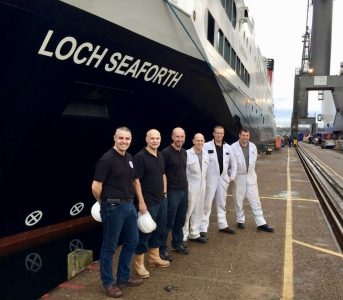
CalMac sea trials crew at Flensburg (left to right): Captain Lewis Mackenzie, Kenny More (Chief Engineer), Captain John Gillies, Callan Sloan (Chief Officer), Andrew Weighill (Chief Engineer), Paul Matheson (Second Engineer)
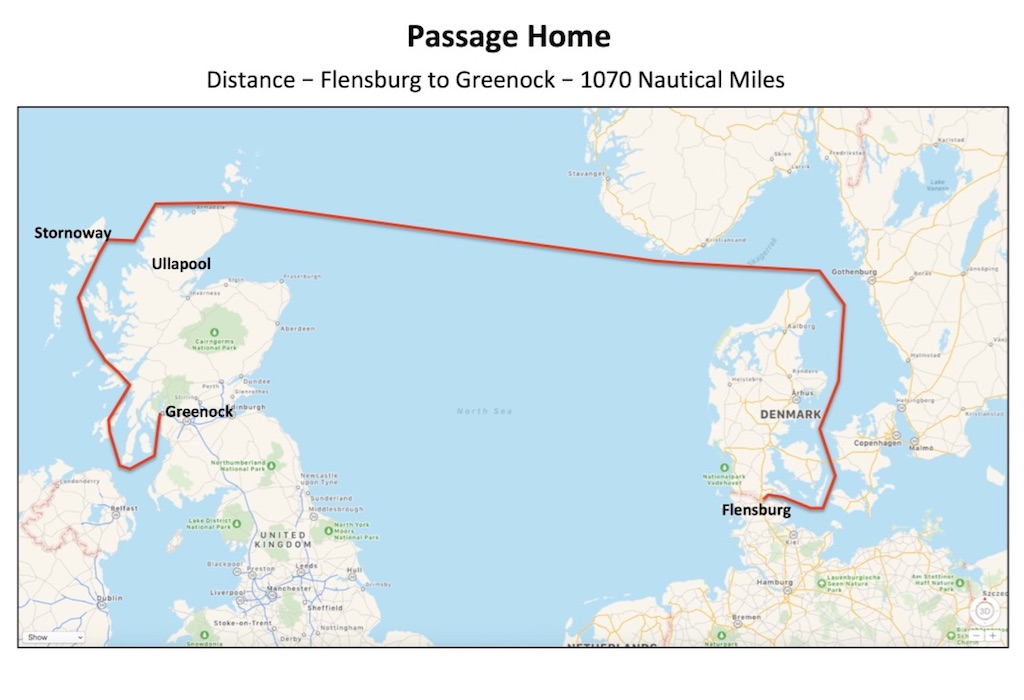

Captain Lewis Mackenzie (centre) is congratulated after his talk by Jim Stirling, non-executive director of David MacBrayne Ltd (left), and fellow CRSC member Allan Smith (right), who had just passed his MCA oral examination for an Officer of the Watch unlimited ticket — the same certificate which Captain Mackenzie gained at the start of his career and to which he referred in his talk. Copyright CRSC
All images are copyright Lewis Mackenzie except where otherwise indicated. All rights reserved. No reproduction on any public platform, including Facebook, without prior permission in writing.
Published on 17 February 2018












